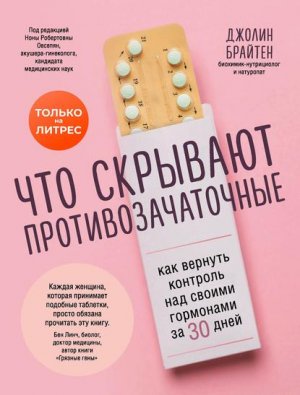Notice: Undefined variable: contentRead in /var/www/www-root/data/www/knizh.ru/funcs.php on line 681
Notice: Undefined variable: row in /var/www/www-root/data/www/knizh.ru/funcs.php on line 719
Notice: Trying to access array offset on value of type null in /var/www/www-root/data/www/knizh.ru/funcs.php on line 719
пїЅпїЅпїЅ пїЅпїЅпїЅпїЅпїЅпїЅпїЅпїЅ пїЅпїЅпїЅпїЅпїЅпїЅпїЅпїЅпїЅпїЅпїЅпїЅпїЅпїЅпїЅпїЅпїЅ. пїЅпїЅпїЅ пїЅпїЅпїЅпїЅпїЅпїЅпїЅ пїЅпїЅпїЅпїЅпїЅпїЅпїЅпїЅ пїЅпїЅпїЅ пїЅпїЅпїЅпїЅпїЅпїЅ пїЅпїЅпїЅпїЅпїЅпїЅпїЅпїЅпїЅ пїЅпїЅ 30 пїЅпїЅпїЅпїЅ пїЅпїЅпїЅпїЅпїЅпїЅпїЅ пїЅпїЅпїЅпїЅпїЅпїЅ

пїЅпїЅпїЅпїЅпїЅпїЅпїЅпїЅпїЅпїЅ пїЅпїЅпїЅпїЅпїЅпїЅпїЅ пїЅпїЅпїЅпїЅпїЅпїЅпїЅпїЅпїЅпїЅпїЅпїЅпїЅ пїЅпїЅпїЅпїЅ пїЅ пїЅпїЅпїЅпїЅпїЅпїЅ;
пїЅпїЅпїЅпїЅпїЅпїЅпїЅпїЅпїЅпїЅ пїЅпїЅпїЅпїЅпїЅпїЅпїЅ пїЅпїЅпїЅпїЅпїЅ пїЅпїЅпїЅпїЅпїЅпїЅпїЅпїЅпїЅпїЅ пїЅпїЅпїЅпїЅпїЅпїЅ пїЅпїЅпїЅпїЅпїЅпїЅпїЅпїЅ;
пїЅпїЅпїЅпїЅпїЅпїЅ пїЅпїЅпїЅпїЅпїЅпїЅ пїЅпїЅпїЅпїЅпїЅ пїЅпїЅпїЅпїЅпїЅпїЅпїЅпїЅ пїЅпїЅпїЅпїЅпїЅпїЅпїЅ;
пїЅпїЅпїЅпїЅпїЅ пїЅпїЅпїЅпїЅпїЅпїЅ пїЅпїЅпїЅпїЅпїЅ пїЅпїЅпїЅпїЅпїЅпїЅпїЅпїЅпїЅпїЅ пїЅпїЅпїЅпїЅпїЅпїЅпїЅ;
пїЅпїЅпїЅпїЅпїЅпїЅ пїЅпїЅпїЅпїЅпїЅпїЅ пїЅпїЅпїЅпїЅпїЅ пїЅпїЅпїЅпїЅпїЅпїЅпїЅ пїЅпїЅпїЅпїЅ;
пїЅпїЅпїЅпїЅпїЅ пїЅпїЅпїЅпїЅпїЅпїЅ пїЅпїЅпїЅпїЅпїЅ пїЅпїЅпїЅпїЅпїЅ пїЅпїЅпїЅпїЅпїЅпїЅ;
пїЅпїЅпїЅпїЅпїЅпїЅ пїЅпїЅпїЅпїЅпїЅпїЅпїЅпїЅ пїЅпїЅпїЅпїЅпїЅ пїЅпїЅпїЅпїЅпїЅ пїЅпїЅпїЅпїЅпїЅпїЅпїЅ.
1.пїЅпїЅпїЅпїЅпїЅпїЅпїЅпїЅ пїЅпїЅпїЅпїЅпїЅпїЅ пїЅ пїЅпїЅпїЅпїЅпїЅпїЅпїЅпїЅпїЅ пїЅ пїЅпїЅпїЅпїЅпїЅ, пїЅпїЅпїЅпїЅпїЅ пїЅпїЅпїЅпїЅпїЅпїЅпїЅпїЅпїЅпїЅ пїЅпїЅ пїЅпїЅпїЅпїЅпїЅпїЅпїЅпїЅ пїЅпїЅпїЅпїЅпїЅ.
2.пїЅпїЅ пїЅпїЅпїЅпїЅпїЅ пїЅпїЅпїЅпїЅпїЅпїЅпїЅпїЅ пїЅпїЅпїЅпїЅпїЅпїЅпїЅ пїЅпїЅпїЅпїЅпїЅпїЅпїЅпїЅ пїЅпїЅпїЅпїЅ, пїЅпїЅпїЅ, пїЅпїЅпїЅпїЅпїЅпїЅпїЅпїЅ, пїЅпїЅпїЅпїЅпїЅпїЅпїЅ, пїЅпїЅпїЅпїЅпїЅпїЅпїЅпїЅпїЅ пїЅпїЅпїЅпїЅпїЅпїЅпїЅ, пїЅпїЅпїЅпїЅ пїЅ пїЅпїЅпїЅпїЅпїЅпїЅпїЅпїЅ пїЅпїЅпїЅпїЅпїЅ.
3.пїЅпїЅпїЅпїЅпїЅпїЅпїЅпїЅ пїЅпїЅпїЅпїЅпїЅ пїЅ пїЅпїЅпїЅпїЅпїЅпїЅ, пїЅпїЅпїЅпїЅпїЅ пїЅпїЅпїЅпїЅпїЅпїЅпїЅпїЅпїЅпїЅ пїЅпїЅ пїЅпїЅпїЅпїЅпїЅпїЅпїЅпїЅ пїЅпїЅпїЅпїЅпїЅ. пїЅпїЅпїЅпїЅпїЅпїЅпїЅпїЅ пїЅпїЅпїЅпїЅпїЅпїЅ пїЅ пїЅпїЅпїЅпїЅ пїЅ пїЅпїЅпїЅпїЅпїЅпїЅпїЅпїЅпїЅпїЅпїЅ.
4.пїЅпїЅпїЅпїЅпїЅпїЅпїЅпїЅ пїЅпїЅпїЅпїЅпїЅпїЅпїЅпїЅпїЅ пїЅпїЅпїЅпїЅпїЅпїЅпїЅ.
5.пїЅпїЅпїЅпїЅпїЅпїЅпїЅпїЅпїЅпїЅпїЅ пїЅпїЅпїЅпїЅпїЅпїЅпїЅпїЅпїЅ пїЅпїЅ пїЅпїЅпїЅпїЅпїЅпїЅпїЅпїЅ пїЅпїЅпїЅпїЅпїЅпїЅпїЅ пїЅпїЅпїЅпїЅ, пїЅпїЅпїЅпїЅпїЅпїЅпїЅпїЅ пїЅпїЅпїЅпїЅпїЅ пїЅпїЅпїЅпїЅпїЅпїЅпїЅ. пїЅпїЅпїЅпїЅпїЅпїЅ пїЅпїЅпїЅпїЅпїЅпїЅпїЅ пїЅпїЅ пїЅпїЅпїЅ пїЅпїЅпїЅпїЅпїЅпїЅ пїЅ пїЅпїЅпїЅпїЅпїЅпїЅ пїЅпїЅпїЅпїЅпїЅпїЅпїЅ пїЅпїЅ пїЅпїЅпїЅпїЅпїЅпїЅ пїЅпїЅпїЅпїЅпїЅпїЅпїЅпїЅпїЅпїЅ пїЅпїЅпїЅпїЅпїЅпїЅпїЅ пїЅ пїЅпїЅпїЅпїЅпїЅпїЅ пїЅпїЅпїЅпїЅпїЅпїЅпїЅпїЅпїЅпїЅ.
пїЅпїЅпїЅпїЅпїЅпїЅпїЅпїЅпїЅпїЅ
пїЅпїЅпїЅпїЅпїЅпїЅ пїЅпїЅ пїЅпїЅпїЅпїЅ пїЅпїЅпїЅпїЅпїЅпїЅпїЅпїЅпїЅпїЅпїЅ пїЅпїЅпїЅпїЅпїЅ пїЅ пїЅпїЅпїЅпїЅпїЅпїЅпїЅпїЅпїЅпїЅпїЅпїЅпїЅ пїЅпїЅпїЅпїЅпїЅ
1.пїЅпїЅпїЅпїЅпїЅ
2.пїЅпїЅпїЅпїЅпїЅ
3.пїЅпїЅпїЅпїЅпїЅ
4.пїЅпїЅпїЅпїЅпїЅпїЅпїЅ
5.пїЅпїЅпїЅпїЅпїЅ
6.пїЅпїЅпїЅпїЅпїЅ
7.пїЅпїЅпїЅпїЅпїЅ
8.пїЅпїЅпїЅпїЅпїЅ
9.пїЅпїЅпїЅпїЅпїЅпїЅпїЅ
10. пїЅпїЅпїЅпїЅ
пїЅпїЅпїЅ пїЅпїЅпїЅпїЅпїЅ пїЅпїЅпїЅпїЅпїЅпїЅпїЅпїЅ пїЅпїЅпїЅпїЅпїЅпїЅпїЅпїЅпїЅпїЅпїЅпїЅпїЅпїЅпїЅ пїЅпїЅпїЅпїЅпїЅпїЅпїЅпїЅпїЅпїЅ
пїЅпїЅпїЅпїЅпїЅпїЅ пїЅпїЅпїЅпїЅпїЅпїЅпїЅпїЅпїЅпїЅ
Akinloye, O., et al. пїЅEffects of Contraceptives on Serum Trace Elements, Calcium, and Phosphorus LevelsпїЅ. West Indian Medical Journal 60, no. 3 (2011): 308пїЅ15.
Aminzadeh, A., et al. пїЅFrequency of Candidiasis and Colonization of Candida Albicans in Relation to Oral Contraceptive PillsпїЅ. Iran Red Crescent Medical Journal 18, no. 10 (2016): e38909.
Anderson, K. E., et al. пїЅEffects of Oral Contraceptives on Vitamin MetabolismпїЅ. Advances in Clinical Chemistry 18 (1976): 247пїЅ87.
Bird, S. T., et al. пїЅIrritable Bowel Syndrome and Drospirenone-Containing Oral Contraceptives; A Comparative-Safety StudyпїЅ. Current Drug Safety 7, no. 1 (2012): 8пїЅ15.
Centers for Disease Control, Cancer and Steroid Hormone Study. пїЅLong-Term Oral Contraceptive Use and the Risk of Breast CancerпїЅ. JAMA 249, no. 12 (1983): 1591пїЅ95.
Chasan-Taber, L., et al. пїЅEpidemiology of Oral-Contraceptives and Cardiovascular DiseaseпїЅ. Annals of Internal Medicine 128, no. 6 (1998): 467пїЅ77.
Davidson, N. E., et al. пїЅGood News About Oral ContraceptivesпїЅ. New England Journal of Medicine 346 (2002): 2078пїЅ79.
Davis, A. R., et al. пїЅOccurrence of Menses or Pregnancy After Cessation of a Continuous Oral ContraceptiveпїЅ. Fertility and Sterility 89, no. 5 (2008): 1059пїЅ63.
Dreon, D. M., et al. пїЅOral Contraceptive Use and Increased Plasma Concentration of C-Reactive ProteinпїЅ. Life Sciences 73, no. 10 (2003): 1245пїЅ52.
Dunn, N., et al. пїЅOral Contraceptives and Myocardial Infarction: Results of the MICA Case Control StudyпїЅ. British Medical Journal 318, no. 7198 (1999): 1579пїЅ84.
Frhlich, M., et al. пїЅOral Contraceptive Use Is Associated with a Systemic Acute Phase ResponseпїЅ. Fibrinolysis and Proteolysis 13, no. 6 (1999): 239пїЅ44.
Gingnell, M., et al. пїЅOral Contraceptive Use Changes Brain Activity and Mood in Women with Previous Negative Affect on the Pill пїЅ A Double-Blinded, Placebo-Controlled Randomized Trial of a Levonorgestrel-Containing Combined Oral ContraceptiveпїЅ. Psychoneuroendocrinology 38, no. 7 (2013): 1133пїЅ44.
Hankinson, S. E., et al. пїЅA Prospective Study of Oral Contraceptive Use and Risk of Breast Cancer (NursesпїЅ Health Study, United States)пїЅ. Cancer Causes and Control 8, no. 1 (1997): 65пїЅ72.
Hertel, J., et al. пїЅEvidence for Stress-Like Alterations in the HPA-Axis in Women Taking Oral ContraceptivesпїЅ. Scientific Reports 7, no. 1 (2017): 14111.
Hickman, R. J., et al. пїЅC-Reactive Protein Is Elevated in Atypical but Not Nonatypical Depression: Data from the National Health and Nutrition Examination Survey (NHANES) 1999пїЅ2004пїЅ. Journal of Behavioral Medicine 37, no. 4 (2014): 621пїЅ29.
Hock, H. пїЅThe Pill and the College Attainment of American Women and MenпїЅ. Florida State University, September 15, 2005. http://paa2006.princeton.edu/papers/61745.
Jenkins, T. A., et al. пїЅInfluence of Tryptophan and Serotonin on Mood and Cognition with a Possible Role of the Gut-Brain AxisпїЅ. Nutrients 8, no. 1 (2016): 56.
Khalili, H., et al. пїЅOral Contraceptives, Reproductive Factors, and Risk of Inflammatory Bowel DiseaseпїЅ. Gut 62, no. 8 (2013): 1153пїЅ59.
Khier, L. A. M. пїЅEffects of Oral Contraceptives on the Thyroid Function in Sudanese FemalesпїЅ. BS thesis, University of Khartoum, 2000. https://core.ac.uk/download /pdf/71669046.pdf.Kluf, C., et al. пїЅPro-Inflammatory Effects of Oestrogens During Use of Oral Contraceptives and Hormone Replacement TreatmentпїЅ. Vascular Pharmacology 39, no. 3 (2002): 149пїЅ54.
Kulkami, J. пїЅDepression as a Side Effect of the Contraceptive PillпїЅ. Expert Opinion on Drug Safety 6, no. 4 (2007): 371пїЅ74.
Lewis, M. A., et al. пїЅThird Generation Oral Contraceptives and Risk of Myocardial Infarction: An International Case-Control Study. Transnational Research Group on Oral Contraceptives and the Health of Young WomenпїЅ. British Medical Journal 312, no. 7023 (1996): 88пїЅ90.
Maes, M., et al. пїЅThe Effects of Glucocorticoids on the Availability of L-Tryptophan and Tyrosine in the Plasma of Depressed PatientsпїЅ. Journal of Affective Disorders 18, no. 2 (1990): 121пїЅ27. Marchbanks, P. A., et al. пїЅOral Contraceptives and the Risk of Breast CancerпїЅ. New England Journal of Medicine 346 (2002): 2025пїЅ32.
Montoya, E. R., et al. пїЅHow Oral Contraceptives Impact Social-Emotional Behavior and Brain FunctionпїЅ. Trends in Cognitive Sciences 21, no. 2 (2017): 125пїЅ36.
Myint, A. M., et al. пїЅThe Role of the Kynurenine Metabolism in Major DepressionпїЅ. Journal of Neural Transmission 119, no. 2 (2012): 245пїЅ51.
Nassaralla, C. L., et al. пїЅCharacteristics of the Menstrual Cycle after Discontinuation of Oral ContraceptivesпїЅ. Journal of WomenпїЅs Health 20, no. 2 (2011): 169пїЅ77.
Oinonen, K. A., et al. пїЅTo What Extent Do Oral Contraceptives Influence Mood and Affect?пїЅ Journal of Affective Disorders 70, no. 3 (2002): 229пїЅ40.
пїЅOral-Contraceptive Use and the Risk of Breast Cancer. The Cancer and Steroid Hormone Study of the Centers for Disease Control and the National Institute of Child Health and Human DevelopmentпїЅ. New England Journal of Medicine 315, no. 7 (1986): 405пїЅ11.
Palan, P. R., et al. пїЅEffects of Oral, Vaginal, and Transdermal Hormonal Contraception on Serum Levels of Coenzyme Q10, Vitamin E, and Total Antioxidant ActivityпїЅ. Obstetrics and Gynaecology International (2010), article ID 925635.
Palmery, M., et al. пїЅOral Contraceptives and Changes in Nutritional RequirementsпїЅ. European Review for Medical and Pharmacological Sciences 17, no. 13 (2013): 1804пїЅ13.
Panzer, C., et al. пїЅImpact of Oral Contraceptives on Sex Hormone пїЅ Binding Globulin and Androgen Levels: A Retrospective Study in Women with Sexual DysfunctionпїЅ. Journal of Sexual Medicine 3, no. 1 (2006): 104пїЅ13.
Park, B., et al. пїЅOral Contraceptive Use, Micronutrient Deficiency, and Obesity Among Premenopausal Females in Korea: The Necessity of Dietary Supplements and Food Intake ImprovementпїЅ. PLoS One 11, no. 6 (2016): e0158177.
Peddie, B. A., et al. пїЅRelationship Between Contraceptive Method and Vaginal FloraпїЅ. Australian and New Zealand Journal of Obstetrics and Gynaecology 24, no. 3 (1984): 217пїЅ18.
Piltonen, T., et al. пїЅOral, Transdermal, and Vaginal Combined Contraceptives Induce an Increase in Markers of Chronic Inflammation and Impair Insulin Sensitivity in Young Healthy Normal-Weight Women: A Randomized StudyпїЅ. Human Reproduction 27, no. 10 (2012): 3046пїЅ56.
Rohr, U. D. пїЅThe Impact of Testosterone Imbalance on Depression and WomenпїЅs HealthпїЅ. Maturitas 41, suppl. 1 (2002): S25пїЅ46.
Sarkar, M., et al. пїЅInfluence of Moonlight on the Birth of Male and Female BabiesпїЅ. Nepal Medical College Journal 7, no. 1 (2005): 62пїЅ64.
Schatz, D. L., et al. пїЅEffects of Oral Contraceptives and Pregnancy on Thyroid FunctionпїЅ. Canadian Medical Association Journal 99, no. 18 (1968): 882пїЅ86.
Schmidt, A., et al. пїЅOral Contraceptive Use and Vaginal Candida ColonizationпїЅ. [In German.] Zentralbl Gynakol 119, no. 11 (1997): 545пїЅ49.
Shakerinejad, G., et al. пїЅFactors Predicting Mood Changes in Oral Contraceptive Pill UsersпїЅ. Reproductive Health 10 (2013): 45.
Skovlund, C. W., et al. пїЅAssociation of Hormonal Contraception with DepressionпїЅ. JAMA Psychiatry 73, no. 11 (2016): 1154пїЅ62.
Skovlund, C. W., et al. пїЅAssociation of Hormonal Contraception with Suicide Attempts and SuicidesпїЅ. American Journal of Psychiatry 175, no. 4 (2017): 336пїЅ42.
Smith, J. S., et al. пїЅCervical Cancer and Use of Hormonal Contraceptives: A Systematic ReviewпїЅ. Lancet 361, no. 9364 (2003): 1159пїЅ67.
Sorgdrager, F. J. H., et al. пїЅThe Association Between the Hypothalamic Pituitary Adrenal Axis and Tryptophan Metabolism in Persons with Recurrent Major Depressive Disorder and Healthy ControlsпїЅ. Journal of Affective Disorders 222 (2017): 32пїЅ39.
Talukdar, N., et al. пїЅEffect of Long-Term Combined Oral Contraceptive Pill Use on Endometrial ThicknessпїЅ. Obstetrics and Gynecology 120, no. 2, pt. 1 (2012): 348пїЅ54.
Turna, B., et al. пїЅWomen with Low Libido: Correlation of Decreased Androgen Levels with Female Sexual Function IndexпїЅ. International Journal of Impotence Research 17, no. 2 (2005): 148пїЅ53.
Van de Wijgert, J. H., et al. пїЅHormonal Contraception Decreases Bacterial Vaginosis but Oral Contraception May Increase Candidiasis: Implications for HIV TransmissionпїЅ. AIDS 27, no. 13 (2013): 2141пїЅ53.
Van Hylckama Vlieg, A., et al. пїЅThe Venous Thrombotic Risk of Oral Contraceptives, Effects of Oestrogen Dose and Progestogen Type: Results of the MEGA Case-Control StudyпїЅ. British Medical Journal 339 (2009): b2921.
Vessey, M., et al. пїЅOral Contraceptive Use and Cancer. Findings in a Large Cohort Study, 1968пїЅ2004пїЅ. British Journal of Cancer 95, no. 3 (2006): 385пїЅ89.
Wang, Q., et al. пїЅEffects of Hormonal Contraception on Systemic Metabolism: Cross-Sectional and Longitudinal EvidenceпїЅ. International Journal of Epidemiology 45, no. 5 (2016): 1445пїЅ57.
Webb, J. L. пїЅNutritional Effects of Oral Contraceptive Use: A ReviewпїЅ. Journal of Reproductive Medicine 25, no. 4 (1980): 150пїЅ56.
White, T., et al. пїЅEffects of Transdermal and Oral Contraceptives on Estrogen-Sensitive Hepatic ProteinsпїЅ. Contraception 74, no. 4 (2006): 293пїЅ96.
Wiegratz, I., et al. пїЅEffect of Four Different Oral Contraceptives on Various Sex Hormones and Serum-Binding GlobulinsпїЅ. Contraception 67, no. 1 (2003): 25пїЅ32.
Zimmerman, Y., et al. пїЅThe Effect of Combined Oral Contraception on Testosterone Levels in Healthy Women: A Systematic Review and Meta-AnalysisпїЅ. Human Reproduction Update 20, no. 1 (2014): 76пїЅ105.
Adams, J. M., et al. пїЅThe Midcycle Gonadotropin Surge in Normal Women Occurs in the Face of an Unchanging Gonadotropin-Releasing Hormone Pulse FrequencyпїЅ. Journal of Clinical Endocrinology and Metabolism 79 (1994): 858пїЅ64.
Baerwald, A. R., O. A. Olatunbosun, and R. A. Pierson. пїЅOvarian Follicular Development Is Initiated During the Hormone-Free Interval of Oral Contraceptive UseпїЅ. Contraception 70, no. 5 (2004): 371пїЅ77.
Cella, F., G. Giordano, and R. Cordera. пїЅSerum Leptin Concentrations During the Menstrual Cycle in Normal-Weight Women: Effects of an Oral Triphasic Estrogen-Progestin MedicationпїЅ. European Journal of Endocrinology 142 (2000): 174пїЅ78.
Clubb, E. пїЅNatural Methods of Family PlanningпїЅ. Journal of the Royal Society of Health 106, no. 4 (1986): 121пїЅ26.
Crosignani, P. G., et al. пїЅOvarian Activity During Regular Oral Contraceptive UseпїЅ. Contraception 54, no. 5 (1996): 271пїЅ73.
Davis, A. R., et al. пїЅOccurrence of Menses or Pregnancy After Cessation of a Continuous Oral ContraceptiveпїЅ. Fertility and Sterility 89, no. 5 (2008): 1059пїЅ63.
Filicori, M., J. P. Butler, and W. F. Crowley Jr. пїЅNeuroendocrine Regulation of the Corpus Luteum in the Human. Evidence for Pulsatile Progesterone SecretionпїЅ. Journal of Clinical Investigation 73 (1984): 1638пїЅ47.
Filicori, M., N. Santoro, G. R. Merriam, and W. F. Crowley Jr. пїЅCharacterization of the Physiological Pattern of Episodic Gonadotropin Secretion Throughout the Human Menstrual CycleпїЅ. Journal of Clinical Endocrinology and Metabolism 62 (1986): 1136пїЅ44.
Fleischer, A. C., G. C. Kalemeris, and S. S. Entman. пїЅSonographic Depiction of the Endometrium During Normal CyclesпїЅ. Ultrasound in Medicine and Biology 12, no. 4 (1986): 271пїЅ77.
Gipson, I. K., et al. пїЅThe Amount of MUC5B Mucin in Cervical Mucus Peaks at MidcycleпїЅ. Journal of Clinical Endocrinology and Metabolism 86, no. 2 (2001): 594пїЅ600.
Gougeon, A. пїЅDynamics of Follicular Growth in the Human: A Model from Preliminary ResultsпїЅ. Human Reproduction 1, no. 2 (1986): 81пїЅ87.
Gougeon A. пїЅDynamics of Human Follicular Growth: A Morphologic PerspectiveпїЅ. In The Ovary, edited by E. Y. Adashi and P. C. K. Leung (New York: Raven Press, 1993), p. 21.
Hall, J. E., D. A. Schoenfeld, K. A. Martin, and W. F. Crowley Jr. пїЅHypothalamic Gonadotropin-Releasing Hormone Secretion and Follicle-Stimulating Hormone Dynamics During the Luteal-Follicular TransitionпїЅ. Journal of Clinical Endocrinology and Metabolism 74, no. 3 (1992): 600пїЅ7.
Jacobs, H. S., et al. пїЅPost-пїЅPillпїЅ Amenorrhoea пїЅ Cause or Coincidence?пїЅ British Medical Journal 2, no. 6092 (1977): 940пїЅ42.
Kenealy, B. P., et al. пїЅNeuroestradiol in the Hypothalamus Contributes to the Regulation of Gonadotropin Releasing Hormone ReleaseпїЅ. Journal of Neuroscience 33, no. 49 (2013): 19051пїЅ9.
Knochenhauer, E., and R. Azziz. пїЅOvarian Hormones and Adrenal Androgens During a WomanпїЅs Life SpanпїЅ. Journal of the American Academy of Dermatology 45, suppl. 3 (2001): S105пїЅ15.
Milsom, I., and T. Korver. пїЅOvulation Incidence with Oral Contraceptives: A Literature ReviewпїЅ. BMJ Sexual and Reproductive Health 34, no. 4 (2008): 237пїЅ46.
Morrison, A. I. пїЅPersistence of Spermatozoa in the Vagina and CervixпїЅ. British Journal of Venereal Diseases 48, no. 2 (1972): 141пїЅ43.
Richards, J. S. пїЅHormonal Control of Gene Expression in the OvaryпїЅ. Endocrine Reviews 15, no. 6 (1994): 725пїЅ51.
Rosenberg, M. J., and M. S. Waugh. пїЅOral Contraceptive Discontinuation: A Prospective Evaluation of Frequency and ReasonsпїЅ. American Journal of Obstetrics and Gynecology 179, no. 3 (1998): 577пїЅ82.
Sherman, B. M., and S. G. Korenman. пїЅHormonal Characteristics of the Human Menstrual Cycle Throughout Reproductive LifeпїЅ. Journal of Clinical Investigation 55, no. 4 (1975): 699пїЅ706.
Simpson, E. R. пїЅSources of Estrogen and Their ImportanceпїЅ. Journal of Steroid Biochemistry and Molecular Biology 86, no. 3пїЅ5 (2003): 225пїЅ30.
Stocco, C., C. Telleria, and G. Gibori. пїЅThe Molecular Control of Corpus Luteum Formation, Function, and RegressionпїЅ. Endocrine Reviews 28 (2007): 117пїЅ49.
Suarez, S. S., and A. A. Pacey. пїЅSperm Transport in the Female Reproductive TractпїЅ. Human Reproduction Update 12, no. 1 (2006): 23пїЅ37.
Taylor, A. E., et al. пїЅMidcycle Levels of Sex Steroids Are Sufficient to Recreate the Follicle-Stimulating Hormone but Not the Luteinizing Hormone Midcycle Surge: Evidence for the Contribution of Other Ovarian Factors to the Surge in Normal WomenпїЅ. Journal of Clinical Endocrinology and Metabolism 80, no. 5 (1995): 1541пїЅ47.
Treloar, A. E., R. E. Boynton, B. G. Behn, and B. W. Brown. пїЅVariation of the Human Menstrual Cycle Trough Reproductive LifeпїЅ. International Journal of Fertility 12, no. 1, pt. 2 (1967): 77пїЅ126.
Tsafriri, A., S. Y. Chun, and R. Reich. пїЅFollicular Rupture and OvulationпїЅ. In The Ovary, edited by E. Y. Adashi and P. C. K. Leung (New York: Raven Press, 1993), p. 227.
Welt, C. K., et al. пїЅFrequency Modulation of Follicle-Stimulating Hormone (FSH) During the Luteal-Follicular Transition: Evidence for FSH Control of Inhibin B in Normal WomenпїЅ. Journal of Clinical Endocrinology and Metabolism 82, no. 8 (1997): 2645пїЅ52.
Behre, H. M., et al. пїЅEfficacy and Safety of an Injectable Combination Hormonal Contraceptive for MenпїЅ. Journal of Clinical Endocrinology and Metabolism 101, no. 12 (2016): 4779пїЅ88.
Boyle, N. B., et al. пїЅThe Effects of Magnesium Supplementation on Subjective Anxiety and Stress пїЅ A Systematic ReviewпїЅ. Nutrients 9, no. 5 (2017): 429.
Cormia, F. E. пїЅAlopecia from Oral ContraceptivesпїЅ. JAMA 201, no. 8 (1967): 635пїЅ37.
Darney, P. D. пїЅOC Practice Guidelines: Minimizing Side EffectsпїЅ. International Journal of Fertility and WomenпїЅs Medicine, Supplement 1 (1997): 158пїЅ69.
Gebel Berg, E. пїЅThe Chemistry of the PillпїЅ. ACS Central Science 1, no. 1 (2015): 5пїЅ7.
Gnoth, C., et al. пїЅCycle Characteristics After Discontinuation of Oral ContraceptivesпїЅ. Gynecological Endocrinology 16, no. 4 (2002): 307пїЅ17.
Grifths, W. A. D. пїЅDiffuse Hair Loss and Oral ContraceptivesпїЅ. British Journal of Dermatology 88, no. 1 (1973): 31пїЅ36.
Grber, U., et al. пїЅMagnesium in Prevention and TherapyпїЅ. Nutrients 7, no. 9 (2015): 8199пїЅ226.
Hammond, N., et al. пїЅNutritional NeuropathiesпїЅ. Neurologic Clinics 31, no. 2 (2013): 477пїЅ89.
Johnson, S. пїЅThe Multifaceted and Widespread Pathology of Magnesium DeficiencyпїЅ. Medical Hypotheses 56, no. 2 (2001): 163пїЅ70.
Kia, A. S., et al. пїЅThe Association Between the Risk of Premenstrual Syndrome and Vitamin D, Calcium, and Magnesium Status Among University Students: A Case Control StudyпїЅ. Health Promotion Perspectives 5, no. 3 (2015): 225пїЅ30.
Lawrence, J. пїЅNSAID Use May Prevent Fertile Women from OvulatingпїЅ. Pharmaceutical Journal 294, no. 7868/9 (2015).
McDowell, L. R. Vitamins in Animal and Human Nutrition. 2nd ed. Ames: Iowa State University Press, 2000, 265пїЅ310.
McIntosh, E. N. пїЅTreatment of Women with the Galactorrhea-Amenorrhea Syndrome with Pyridoxine (Vitamin B6)пїЅ. Journal of Clinical Endocrinology and Metabolism 42, no. 6 (1976): 1192пїЅ95.
Mehta, K., et al. пїЅAntiproliferative Effect of Curcumin (Diferuloylmethane) Against Human Breast Tumor Cell LineпїЅ. Anticancer Drugs 8, no. 5 (1997): 470пїЅ81.
Mendona, L. L. F., et al. пїЅNon-Steroidal AntiInflammatory Drugs as a Possible Cause for Reversible InfertilityпїЅ. Rheumatology 39, no. 8 (2000): 880пїЅ82.
Nabel, Elizabeth, G. пїЅCoronary Heart Disease in Women пїЅ an Ounce of PreventionпїЅ. New England Journal of Medicine 343 (August 24, 2000): 572пїЅ74.
Parry, B. L., et al. пїЅOral Contraceptives and Depressive Symptomatology: Biologic MechanismsпїЅ. Comprehensive Psychiatry 20, no. 4 (1979): 347пїЅ58.
Piltonen, T., et al. пїЅOral, Transdermal, and Vaginal Combined Contraceptives Induce an Increase in Markers of Chronic Inflammation and Impair Insulin Sensitivity in Young Healthy Normal-Weight Women: A Randomized StudyпїЅ. Human Reproduction 27, no. 10 (2012): 3046пїЅ56.
Posaci, C., et al. пїЅPlasma Copper, Zinc, and Magnesium Levels in Patients with Premenstrual Tension SyndromeпїЅ. Acta Obstetricia et Gynecologica Scandinavica 73, no. 6 (1994): 452пїЅ55.
Practice Committee of American Society for Reproductive Medicine. пїЅCurrent Evaluation of AmenorrheaпїЅ. Fertility and Sterility 90, suppl. 5 (2008): S219пїЅ25.
Rajizadeh, A., et al. пїЅEffect of Magnesium Supplementation on Depression Status in Depressed Patients with Magnesium Deficiency: A Randomized, Double-Blind, Placebo-Controlled TrialпїЅ. Nutrition 35 (2017): 56пїЅ60.
Ramos, P. M., et al. пїЅFemale Pattern Hair Loss: A Clinical and Pathophysiological ReviewпїЅ. Anais Brasileiros de Dermatologia 90, no. 4 (2015): 529пїЅ43.
Roberts, S. C., et al. пїЅMHCпїЅCorrelated Odour Preferences in Humans and the Use of Oral ContraceptivesпїЅ. Proceedings of the Royal Society B: Biological Sciences 275, no. 1652 (2008): 2715пїЅ22.
Rojas-Walsson, R., et al. пїЅDiagnosis and Management of Post-Pill AmenorrheaпїЅ. Journal of Family Practice 13, no. 2 (1981): 165пїЅ69.
Stewart, M. E., et al. пїЅEffect of Cyproterone Acetate-Ethinyl Estradiol Treatment on the Proportions of Linoleic and Sebaleic Acids in Various Skin Surface Lipid ClassesпїЅ. Archives of Dermatological Research 278, no. 6 (1986): 481пїЅ85.
University of Pennsylvania School of Medicine. пїЅTwo Thirds of Women Interested in Stopping Their Periods but Unsure About SafetyпїЅ. ScienceDaily. October 4, 2007.
Wang, J. G., et al. пїЅThe Complex Relationship Between Hypothalamic Amenorrhea and Polycystic Ovary SyndromeпїЅ. Journal of Clinical Endocrinology and Metabolism 93, no. 4 (2008): 1394пїЅ97.
Wedekind, C., et al. пїЅBody OdourPreferences in Men and Women: Do They Aim for Specific MHC Combinations or Simply Heterozygosity?пїЅ Proceedings of the Royal Society B: Biological Sciences 264, no. 1387 (1997): 1471пїЅ79.
Wyatt, K. M., et al. пїЅEfficacy of Vitamin B-6 in the Treatment of Premenstrual Syndrome: Systematic ReviewпїЅ. British Medical Journal 318, no. 7195 (1999): 1375пїЅ81.
American College of Obstetricians and Gynecologists Committee on Adolescent Health Care. пїЅMenstruation in Girls and Adolescents: Using the Menstrual Cycle as a Vital SignпїЅ. Committee Opinion No. 651. December 2015. https://www.acog.org/-/media/Committee пїЅ Opinions/Committee-on-Adolescent-Health-Care/co651.pdf?dmc=1&ts=20180626 T0442019822.
Bouchard, C., et al. пїЅUse of Oral Contraceptive Pills and Vulvar Vestibulitis: A Case-Control StudyпїЅ. American Journal of Epidemiology 156, no. 3 (2002): 254пїЅ61.
Goldstein, A. T., et al. пїЅPolymorphisms of the Androgen Receptor Gene and Hormonal Contraceptive Induced Provoked VestibulodyniaпїЅ. Journal of Sexual Medicine 11, no. 11 (2014): 2764пїЅ71.
Baum, J. K., et al. пїЅPossible Association Between Benign Hepatomas and Oral ContraceptivesпїЅ. Lancet 2, no. 7835 (1973): 926пїЅ29.
Blackwell. пїЅOral Contraceptive Pill May Prevent More than Pregnancy: Could Cause Long-Term Problems with TestosteroneпїЅ. ScienceDaily.com. January 5, 2006.
https:// www.sciencedaily.com/releases/2006/01/060104232338.htm.
Bradlow, H. L., et al. пїЅMultifunctional Aspects of the Action of Indole-3-Carbinol as an Antitumor AgentпїЅ. Annals of the New York Academy of Sciences 889 (1999): 204пїЅ13.
Bradlow, H. L., et al. пїЅ2-Hydroxyestrone: The пїЅGoodпїЅ EstrogenпїЅ. Journal of Endocrinology 150 suppl. (1996): S259пїЅ65.
Dawling, S., et al. пїЅCatechol-o-methyltransferase (COMT)-Mediated Metabolism of Catechol Estrogens: Comparison of Wild-Type and Variant COMT IsoformsпїЅ. Cancer Research 61, no. 18 (2001): 6716пїЅ22.
De Waal, E. J., et al. пїЅDifferential Effects of 2,3,7,8-Tetrachlorodibenzo-p-dioxin, Bis(tri-n butyltin) Oxide, and Cyclosporine on Thymus HistophysiologyпїЅ. Critical Reviews in Toxicology 27, no. 4 (1997): 381пїЅ430.
Edmondson, H. A., et al. пїЅLiver-Cell Adenomas Associated with Use of Oral ContraceptivesпїЅ. New England Journal of Medicine 294, no. 9 (1976): 470пїЅ72.
Eramo, S., et al. пїЅEstrogenicity of Bisphenol A Released from Sealants and Composites: A Review of the LiteratureпїЅ. Annali di Stomatologia 1, nos. 3пїЅ4 (2010): 14пїЅ21.
Etminan, M., et al. пїЅOral Contraceptives and the Risk of Gallbladder Disease: A Comparative Safety StudyпїЅ. Canadian Medical Association Journal 183, no. 8 (2011): 899пїЅ904.
Fishman, W. H. пїЅBeta-Glucuronidase in the Metabolic Conjugation of Estrogenic HormonesпїЅ. Federation Proceedings 6, no. 1, pt. 2 (1947): 251.
Fowke, J. H., et al. пїЅBrassica Vegetable Consumption Shifts Estrogen Metabolism in Healthy Postmenopausal WomenпїЅ. Cancer Epidemiology, Biomarkers and Prevention 9, no. 8 (2000): 773пїЅ79.
Hofmann, A. F. пїЅThe Continuing Importance of Bile Acids in Liver and Intestinal DiseaseпїЅ. Archives of Internal Medicine 159, no. 22 (1999): 2647пїЅ58.
Klatskin, G. пїЅHepatic Tumors: Possible Relationship to Use of Oral ContraceptivesпїЅ. Gastroenterology 73, no. 2 (1977): 386пїЅ94.
Kuhl, H., et al. пїЅThe Effect of Sex Steroids and Hormonal Contraceptives upon Thymus and Spleen on Intact Female RatsпїЅ. Contraception 28, no. 6 (1983): 587пїЅ601.
Lord, R. S., et al. пїЅEstrogen Metabolism and the Diet-Cancer Connection: Rationale for Assessing the Ratio of Urinary Hydroxylated Estrogen MetabolitesпїЅ. Alternative Medicine Review 7, no. 2 (2002): 112пїЅ29.
Marciani, L., et al. пїЅEffects of Various Food Ingredients on Gallbladder EmptyingпїЅ. European Journal of Clinical Nutrition 67, no. 11 (2013): 1182пїЅ87.
McCann, S. E., et al. пїЅChanges in 2-Hydroxyestrone and 16-Hydroxyestrone Metabolism with Flaxseed Consumption: Modification by COMT and CYP1B1 GenotypeпїЅ. Cancer Epidemiology, Biomarkers and Prevention 16, no. 2 (2007): 256пїЅ62.
Meissner, K. пїЅHemorrhage Caused by Ruptured Liver Cell Adenoma Following Long-Term Oral Contraceptives: A Case ReportпїЅ. Hepatogastroenterology 45, no. 19 (1998): 224пїЅ25. Mueck, A. O., et al. пїЅEstradiol Metabolism and Malignant DiseaseпїЅ. Maturitas 43, no. 1 (2002): 1пїЅ10.
Muti, P., et al. пїЅEstrogen Metabolism and Risk of Breast Cancer: A Prospective Study of the 2:16Alpha-Hydroxyestrone Ratio in Premenopausal and Postmenopausal WomenпїЅ. Epidemiology 11, no. 6 (2000): 635пїЅ40.
Nime, F., et al. пїЅThe Histology of Liver Tumors in Oral Contraceptive Users Observed During a National Survey by the American College of Surgeons Commission on CancerпїЅ. Cancer 44, no. 4 (1979): 1481пїЅ89.
Nwachukwu, J. C., et al. пїЅResveratrol Modulates the Inflammatory Response Via an Estrogen Receptor-Signal Integration NetworkпїЅ. Elife 3 (2014): e02057.
Oredipe, O. A., et al. пїЅDietary Glucarate-Mediated Inhibition of Initiation of Diethyl-nitrosamine-Induced HepatocarcinogenesisпїЅ. Toxicology 74, nos. 2пїЅ3 (1992): 209пїЅ22.
Panzer, C., et al. пїЅImpact of Oral Contraceptives on Sex Hormone пїЅ Binding Globulin and Androgen Levels: A Retrospective Study in Women with Sexual DysfunctionпїЅ. Journal of Sexual Medicine 3, no. 1: 104пїЅ13.
Prigge, J. R., et al. пїЅHepatocyte DNA Replication in Growing Liver Requires Either Glutathione or a Single Allele of TXNRD1пїЅ. Free Radical Biology and Medicine 52, no. 4 (2012): 803пїЅ10.
Racine, A., et al. пїЅMenopausal Hormone Therapy and Risk of Cholecystectomy: A Prospective Study Based on the French E3N CohortпїЅ. Canadian Medical Association Journal 185, no. 7 (2013): 555пїЅ61.
Rafogianis, R., et al. пїЅEstrogen Metabolism by ConjugationпїЅ. Journal of the National Cancer Institute Monographs 27 (2000): 113пїЅ24.
Rooks, J. B., et al. пїЅEpidemiology of Hepatocellular Adenoma. The Role of Oral Contraceptive UseпїЅ. JAMA 242, no. 7 (1979): 644пїЅ48.
Rosenberg, L. пїЅThe Risk of Liver Neoplasia in Relation to Combined Oral Contraceptive UseпїЅ. Contraception 43, no. 6 (1991): 643пїЅ52.
Ruotolo, R., et al. пїЅAnti-Estrogenic Activity of a Human Resveratrol MetaboliteпїЅ. Nutrition, Metabolism, and Cardiovascular Diseases 23, no. 11 (2013): 1086пїЅ92.
Schuurman, H. J., et al. пїЅChemicals Trophic for the Thymus: Risk for Immunodeficiency and AutoimmunityпїЅ. International Journal of Immunopharmacology 14, no. 3 (1992): 369пїЅ75.
Shortell, C. K., et al. пїЅHepatic Adenoma and Focal Nodular HyperplasiaпїЅ. Surgery, Gynecology, and Obstetrics 173, no. 5 (1991): 426пїЅ31.
Se, K. L., et al. пїЅLiver Pathology Associated with the Use of Anabolic-Androgenic SteroidsпїЅ. Liver 12, no. 2 (1992): 73пїЅ79.
Steiner, J. L., et al. пїЅDose-Dependent Benefits of Quercetin on Tumorigenesis in the C3(1)/ SV40Tag Transgenic Mouse Model of Breast CancerпїЅ. Cancer Biology and Therapy 15, no. 11 (2014): 1456пїЅ67.
Ursin, G., et al. пїЅUrinary 2-Hydroxyestrone/16Alpha-Hydroxyestrone Ratio and Risk of Breast Cancer in Postmenopausal WomenпїЅ. Journal of the National Cancer Institute 91, no. 12 (1999): 1067пїЅ72.
Wallwiener, C. W., et al. пїЅPrevalence of Sexual Dysfunction and Impact of Contraception in Female German Medical StudentsпїЅ. Journal of Sexual Medicine 7, no. 6 (2010): 2139пїЅ48.
Wu, Z., et al. пїЅProgesterone Inhibits L-Type Calcium Currents in Gall Bladder Smooth Muscle CellsпїЅ. Journal of Gastroenterology and Hepatology 25, no. 12 (2010): 1838пїЅ43.
Yang, C. Z., et al. пїЅMost Plastic Products Release Estrogenic Chemicals: A Potential Health Problem Tat Can Be SolvedпїЅ. Environmental Health Perspectives 119, no. 7 (2011): 989пїЅ96.
Zhang, L. Q., et al. пїЅPotential Therapeutic Targets for the Primary Gallbladder Carcinoma: Estrogen ReceptorsпїЅ. Asian Pacific Journal of Cancer Prevention 14, no. 4 (2013): 2185пїЅ90.
Adlercretz, H., et al. пїЅStudies on the Role of Intestinal Bacteria in Metabolism of Synthetic and Natural Steroid HormonesпїЅ. Journal of Steroid Biochemistry 20, no. 1 (1984): 217пїЅ29.
Ashraf, M., et al. пїЅThe Presence of Anti-Thyroid and Anti-Ovarian Auto-Antibodies in Familial Premature Ovarian FailureпїЅ. International Journal of Fertility and Sterility 1, no. 4 (2008): 171пїЅ74.
Bast, A., et al. пїЅCeliac Disease and Reproductive HealthпїЅ. Practical Gastroenterology 35, no. 10 (2009): 10пїЅ21.
Bernier, M. O., et al. пїЅCombined Oral Contraceptive Use and the Risk of Systemic Lupus ErythematosusпїЅ. Arthritis and Rheumatology 61, no. 4 (2009): 476пїЅ81.
Blasi, F., et al. пїЅThe Effect of N-Acetylcysteine on Biofilms: Implications for the Treatment of Respiratory Tract InfectionsпїЅ. Respiratory Medicine 117 (2016): 190пїЅ97.
Bultman, S. J. пїЅThe Microbiome and Its Potential as a Cancer Preventive InterventionпїЅ. Seminars in Oncology 43, no. 1 (2016): 97пїЅ106.
Campana, R., et al. пїЅStrain-Specific Probiotic Properties of Lactic Acid Bacteria and Their Interference with Human Intestinal Pathogens InvasionпїЅ. Gut Pathogens 9, no. 1 (2017): 12.
Cook, L. C., et al. пїЅThe Role of Estrogen Signaling in a Mouse Model of Inflammatory Bowel Disease: A Helicobacter Hepaticus ModelпїЅ. PLoS One 9, no. 4 (2014): e94209.
Costenbader, K. H., et al. пїЅReproductive and Menopausal Factors and Risk of Systemic Lupus Erythematosus in WomenпїЅ. Arthritis and Rheumatology 56, no. 4 (2007): 1251пїЅ62.
Crujeiras, A. B., et al. пїЅLeptin Resistance in Obesity: An Epigenetic LandscapeпїЅ. Life Sciences 140 (2015): 57пїЅ63.
Cummings, S. R., et al. пїЅPrevention of Breast Cancer in Postmenopausal Women: Approaches to Estimating and Reducing RiskпїЅ. Journal of the National Cancer Institute 101, no. 6 (2009): 384пїЅ98.
Cutolo, M., et al. пїЅEstrogens and Autoimmune DiseasesпїЅ. Annals of the New York Academy of Sciences 1089 (2006): 538пїЅ47.
Dai, Z. L., et al. пїЅL-Glutamine Regulates Amino Acid Utilization by Intestinal BacteriaпїЅ. Amino Acids 45, no. 3 (2013): 501пїЅ12.
De Kort, S., et al. пїЅLeaky Gut and Diabetes Mellitus: What Is the Link?пїЅ Obesity Reviews 12, no. 6 (2011): 449пїЅ58.
Dinicola, S., et al. пїЅN-Acetylcysteine as Powerful Molecule to Destroy Bacterial Biofilms. A Systematic ReviewпїЅ. European Review for Medical and Pharmacological Sciences 18, no. 19 (2014): 2942пїЅ48.
Divi, R. L., et al. пїЅAnti-thyroid Isoflavones from Soybean: Isolation, Characterization, and Mechanisms of ActionпїЅ. Biochemical Pharmacology 54, no. 10 (1997): 1087пїЅ96.
Engen, P. A., et al. пїЅThe Gastrointestinal Microbiome: Alcohol Effects on the Composition of Intestinal MicrobiotaпїЅ. Alcohol Research 37, no. 2 (2015): 223пїЅ36.
Faculty of Family Planning and Reproductive Health Care Clinical Effectiveness Unit. пїЅContraceptive Choices for Women with Inflammatory Bowel DiseaseпїЅ. Journal of Family Planning and Reproductive Health Care 29, no. 3 (2003): 127пїЅ35. http://srh.bmj.com /content/familyplanning/29/3/127.full.pdf.
Fasano, A. пїЅLeaky Gut and Autoimmune DiseasesпїЅ. Clinical Reviews in Allergy and Immunology 42, no. 1 (2012): 71пїЅ78.
Fasano, A. пїЅZonulin, Regulation of Tight Junctions, and Autoimmune DiseasesпїЅ. Annals of the New York Academy of Sciences 1258 (2012): 25пїЅ33.
Fasano, A., et al. пїЅMechanisms of Disease: The Role of Intestinal Barrier Function in the Pathogenesis of Gastrointestinal Autoimmune DiseasesпїЅ. Nature Clinical Practice. Gastroenterology and Hepatology 2, no. 9 (2005): 416пїЅ22.
Fnichel, P., et al. пїЅPrevalence, Specificity, and Significance of Ovarian Antibodies During Spontaneous Premature Ovarian FailureпїЅ. Human Reproduction 12, no. 12 (1997): 2623пїЅ28.






